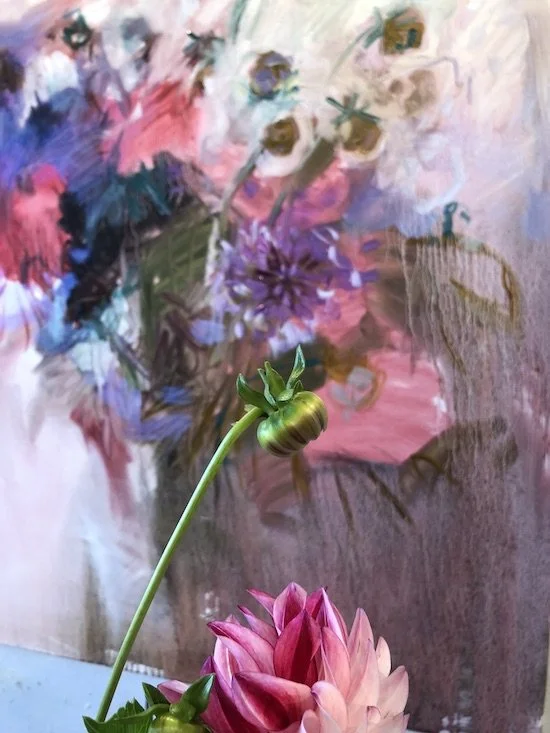But What Does it Mean?
Going into extreme detail about what my paintings are “about” is not something I tend to do right away. There is a balance between giving just the right clue to invite the viewer to have their own experience and saying so much that there is no room left over for anyone to have their relationship with the painting. Most of the time, my titles are enough. It’s personal. We get to bring our own meaning to the art we love, and so when it comes to making my art for others to experience, I tend to lean towards giving a lot of spaciousness for interpretation.The same is true for when I view great works of art at a museum. I don’t linger very long on the placards or text, in fact, I usually ignore them at first so that I can bring my own impressions to what I am taking in.
I feel so much awe being able to witness what people see in art. There are no wrong answers. This happens when someone feels safe and confident enough to share. It’s one of the most beautiful aspects of being in the arts. I have been on trips with friends where we are standing in front of the world’s most famous paintings and they disclose such private feelings about what they see. I have had collectors pick up work at my studio and suddenly burst into tears, opening up about why they were drawn to the painting and what it means to them and why they needed to tell me. The very subjectivity that makes art so accessible can also make it feel somewhat obscure when we don’t know we always have permission to trust our own instincts about it. It’s my hope that writing about the power of art will open up this space.
There is always a risk of over telling. I feel a careful, tender respect to the relationship between the art and the viewer. Guarding the mysterious and making sure not interfere with that special experience, it is a special circle of keepers I get to be a part of.
